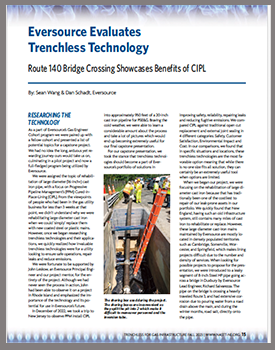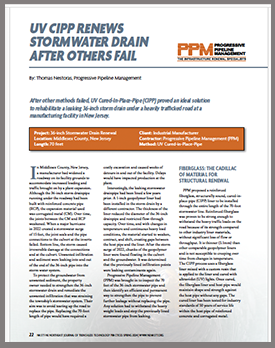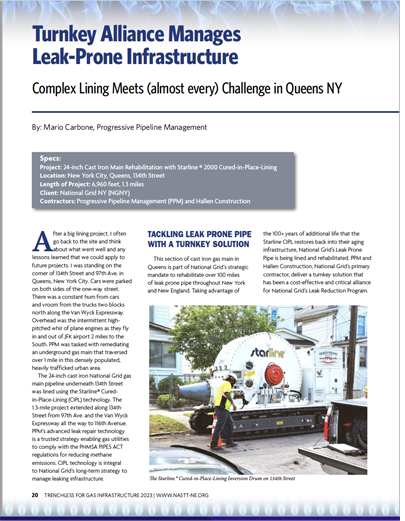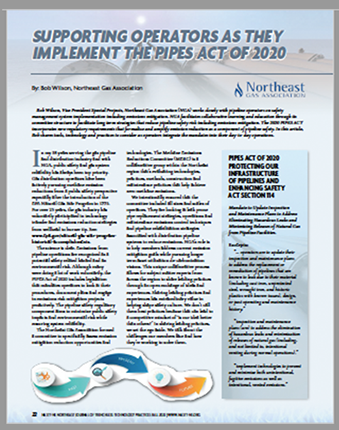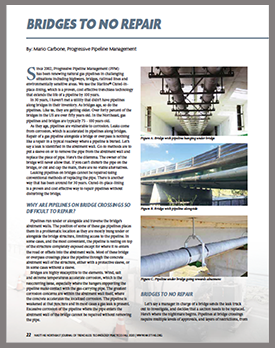recent news & publications CLICK TO DOWNLOad
list of publications - click to download pdf
TGIA - Lining a 42-Inch Gas Main Delivers Cost Savings - Thomas Nestoras - May 2025
AGA - Analyzing Options for Gas Main Replacement - Casey Giambrone - Nov 2024
NASTT - University Pipe System Rehab -Thomas Nestoras - Fall 2024
NASTT - UV CIPP Renews Storm Drain After Others Fail- Thomas Nestoras - Spring 2024
NASTT - Eversource Evaluates Trenchless Technology - Sean Wang & Dan Schadt, Eversource - Fall 2023
NASTT - Turnkey Alliance Manages Leak-Prone Infrastructure - Mario Carbone - Spring 2023
NASTT - PIPES ACT 2020 Implementation- Bob Wilson, Northeast Gas Association - November 2022
TGIA - Improving Pipeline Technology for Twenty Years - Spring 2022
Trenchless Technology - ”The Mess” - Rehabilitation Project of the Year 2021 - October 2021
NASTT - BEM Pipeline Assessment Technology - Casey Giambrone - Spring 2021
NASTT- Bridges to No Repair - Fall 2020
Business View- PPM Company Profile- July 2020
NASTT - Complex Lining Project Under Brooklyn’s Gowanus Canal Window to History - Spring 2020
Cleaner Magazine - 42” World Record - Not for the Faint at Heart, PPM Profile - March 2020
Underground Construction - 42” World Record - Gas Main Relining- February 2020
Pipeline & Gas Journal - 42” World Record - Innovation Drives Natural Gas Main Renewal- January 2020
Blueprint Construction - PPM - January 2020
NASTT -Pipeline Wall Condition Inspection Using Broadband Electromagnetic Probe (BEM) -Spring 2019
Trenchless Technology -Project of the Year - Winner: 36” CIPL Gas Main Project - October 2018
NASTT-NE Journal-Cured-in-Place-Lining Preserves Historic Block- Fall 2018
NASTT and MATA World Record 36" CIPL on Cast Iron Gas Main; - March 2018
NASTT - Fiber Reinforced Polymers & CIPP Liners; Fall 2017
NASTT - Cross Bore Inspection Technologies- Fall 2017
Underground Construction - Cured In Place Liner Research Demonstrates Long Term Viability - Feb 2016
NASTT - PSE&G Largest CIPL - Project - 2013
CIGNA MRF Machine-readable files comply with federal Transparency in Coverage Rule. Includes negotiated service rates and out-of-network allowed amounts between health plans and healthcare providers. The machine readable files are formatted to allow researchers, regulators, and application developers to more easily access and analyze data.






